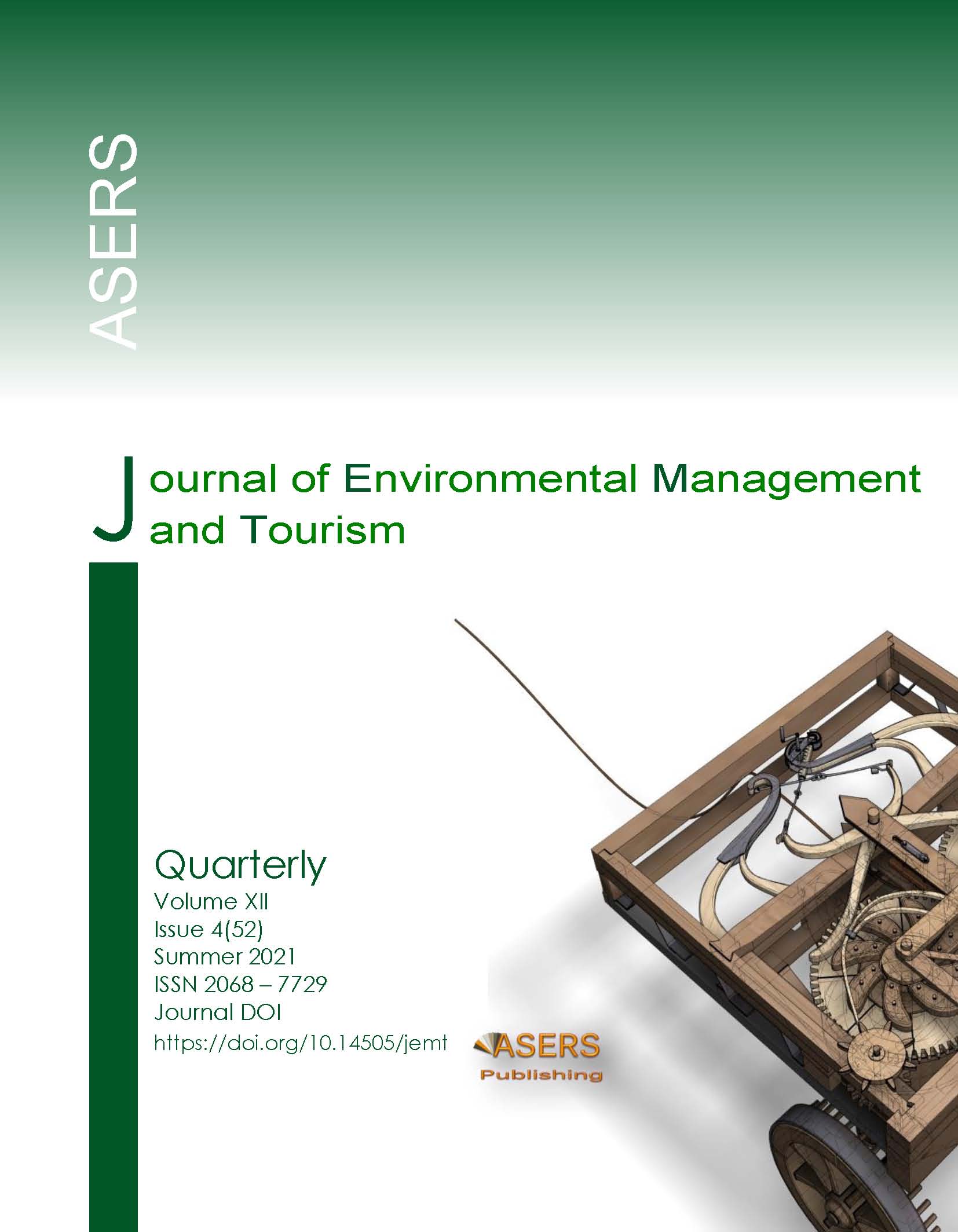How Do Undergraduate Tourism Students Perceive the Service Quality in their Educational Institution? An Assessment Using the SERVQUAL Framework
Abstract
Tourism education is an important component and contributor to the tourism industry's global success, particularly as technology and innovation become more prevalent in the hospitality and tourism sectors around the world. Several studies have been conducted on student perceptions of tourism education and the tourism industry's long-term viability in the current and future environment. The importance of a capable, competent, passionate, and dedicated workforce in the service industries in general, and the tourism industry in particular, cannot be overstated. Related studies have also suggested that in the service sector, workers' optimistic attitudes about their work are critical for customer loyalty and satisfaction. Service quality and customer service are leading principles in the business world. Assessing educational service quality is important for encouraging and providing feedback on the effectiveness of educational plans and their execution as higher education institutions compete for competitive advantages and high service quality. In a number of universities, as well as further afield, monitoring student satisfaction with education quality has become an important part of the educational process. This study shows how to use the SERVQUAL system to measure student satisfaction in a more effective way.It entails the use of the SERVQUAL methodology to query and survey five factors related to student services. The proposed instrument was tested on 400 undergraduate tourism students at a large regional university in Thailand. The approach's utility in collecting tourism students' impressions, evaluating them, and reducing them to a form usable by management as an off-the-shelf service quality evaluation tool is demonstrated by rigorous study.
References
[2] Cavallone, M., Ciasullo, M.V., Douglas, J., Palumbo, R. 2019. Framing higher education quality from a business perspective: setting the conditions for value co-creation. Studies in Higher Education, 1-13. DOI:https://doi.org/10.1080/03075079.2019.1672644.
[3] Daniel, A.D., Costa, R.A., Pita, M., Costa, C. 2017. Tourism Education: What about entrepreneurial skills?. Journal of Hospitality and Tourism Management, 30, 65-72. DOI:https://doi.org/10.1016/j.jhtm.2017.01.002.
[4] Đonlagić, S., Fazlić, S. 2015. Quality assessment in higher education using the SERVQUALQ model. Management: Journal of Contemporary Management Issues, 20(1), 39-57. https://hrcak.srce.hr/141588.
[5] Edelheim, J. 2020. How should tourism education values be transformed after 2020? Tourism Geographies, 22(3), 547-554. DOI: https://doi.org/10.1080/14616688.2020.1760927.
[6] Fuchs, K. 2021a. Preparing students for success in a changing world: the role of virtual whiteboards in the modern classroom. Education Quarterly Reviews, 4(1), 151-158. DOI:https://doi.org/10.31014/aior.1993.04.01.182.
[7] Fuchs, K. 2021b. Advances in tourism education: a qualitative inquiry about emergency remote teaching in higher education. Journal of Environmental Management and Tourism, 12(2), 538-543. https://doi.org/10.14505//jemt.v12.2(50).23.
[8] Fuchs, K. 2021c. Evaluating the technology-enhanced flipped classroom through the students’ eye: a case study. Proceedings of The 3rd International Conference on Research in Education, 2021, Vol. 1, 25-33. https://doi.org/10.6084/m9.figshare.14173622.
[9] Hsu, C.H. 2018. Tourism education on and beyond the horizon. Tourism Management Perspectives, 25, -183. DOI:https://doi.org/10.1016/j.tmp.2017.11.022.
[10] Kim, H.J., Jeong, M. 2018. Research on hospitality and tourism education: Now and future. Tourism Management Perspectives, 25,.119-122. DOI: https://doi.org/10.1016/j.tmp.2017.11.025.
[11] Ladhari, R. 2009. A review of twenty years of SERVQUAL research. International Journal of Quality and Service Sciences. DOI:https://doi.org/10.1108/17566690910971445.
[12] Latif, K.F., Latif, I., Farooq Sahibzada, U., Ullah, M. 2019. In search of quality: measuring higher education service quality (HiEduQual). Total Quality Management & Business Excellence, 30(7-8), 768-791. DOI:https://doi.org/10.1080/14783363.2017.1338133.
[13] Lee, K.W., Joung, H.W. 2017. An examination of students’ perceptions for guest speakers in hospitality and tourism programs. Journal of Teaching in Travel & Tourism, 17(4), 300-312. DOI:https://doi.org/10.1080/15313220.2017.1361888.
[14] Mei, X.Y. 2019. Gaps in tourism education and workforce needs: attracting and educating the right people. Current Issues in Tourism, 22(12), 1400-1404. DOI:https://doi.org/10.1080/13683500.2017.1402870.
[15] Osman, A.R., Saputra, R.S. 2019. A pragmatic model of student satisfaction: A viewpoint of private higher education. Quality Assurance in Education. DOI: https://doi.org/10.1108/QAE-05-2017-0019.
[16] Parahoo, S.K., Santally, M.I., Rajabalee, Y., Harvey, H.L. 2016. Designing a predictive model of student satisfaction in online learning. Journal of Marketing for Higher Education, 26(1), 1-19. DOI:https://doi.org/10.1080/08841241.2015.1083511.
[17] Rivera Jr, D. 2016. A Pre-/postcourse analysis of distance education students’ attitudes toward and perceptions of diversity and multicultural issues. Journal of Hospitality & Tourism Education, 28(2), 60-70. DOI:https://doi.org/10.1080/10963758.2016.1163496.
[18] Ruan, W.Q., Li, Y.Q., & Liu, C.H.S. 2017. Measuring tourism risk impacts on destination image. Sustainability, 9(9), 1501. DOI:https://doi.org/10.3390/su9091501.
[19] Rueda, L., Benitez, J., Braojos, J. 2017. From traditional education technologies to student satisfaction in Management education: A theory of the role of social media applications. Information & Management, 54(8), 1059-1071. DOI:https://doi.org/10.1016/j.im.2017.06.002.
[20] Sándorová, Z., Repáňová, T., Palenčíková, Z., Beták, N. 2020. Design thinking-A revolutionary new approach in tourism education?. Journal of Hospitality, Leisure, Sport & Tourism Education, 26, 100238. DOI:https://doi.org/10.1016/j.jhlste.2019.100238.
[21] Saavedra, A.R., Opfer, V.D. 2012. Learning 21st-century skills requires 21st-century teaching. Phi Delta Kappan, 94(2), 8-13. DOI:https://doi.org/10.1177/003172171209400203.
[22] Seyfried, M., Pohlenz, P. 2018. Assessing quality assurance in higher education: quality managers’ perceptions of effectiveness. European Journal of Higher Education, 8(3), 258-271. DOI:https://doi.org/10.1080/21568235.2018.1474777.
[23] Tomlinson, M. 2018. Conceptions of the value of higher education in a measured market. Higher Education, 75(4), 711-727. DOI: https://doi.org/10.1007/s10734-017-0165-6.
[24] Trautwein, C., Bosse, E. 2017. The first year in higher education - critical requirements from the student perspective. Higher Education, 73(3), 371-387. DOI:https://doi.org/10.1007/s10734-016-0098-5.
Copyright© 2025 The Author(s). Published by ASERS Publishing 2025. This is an open access article distributed under the terms of CC-BY 4.0 license.
